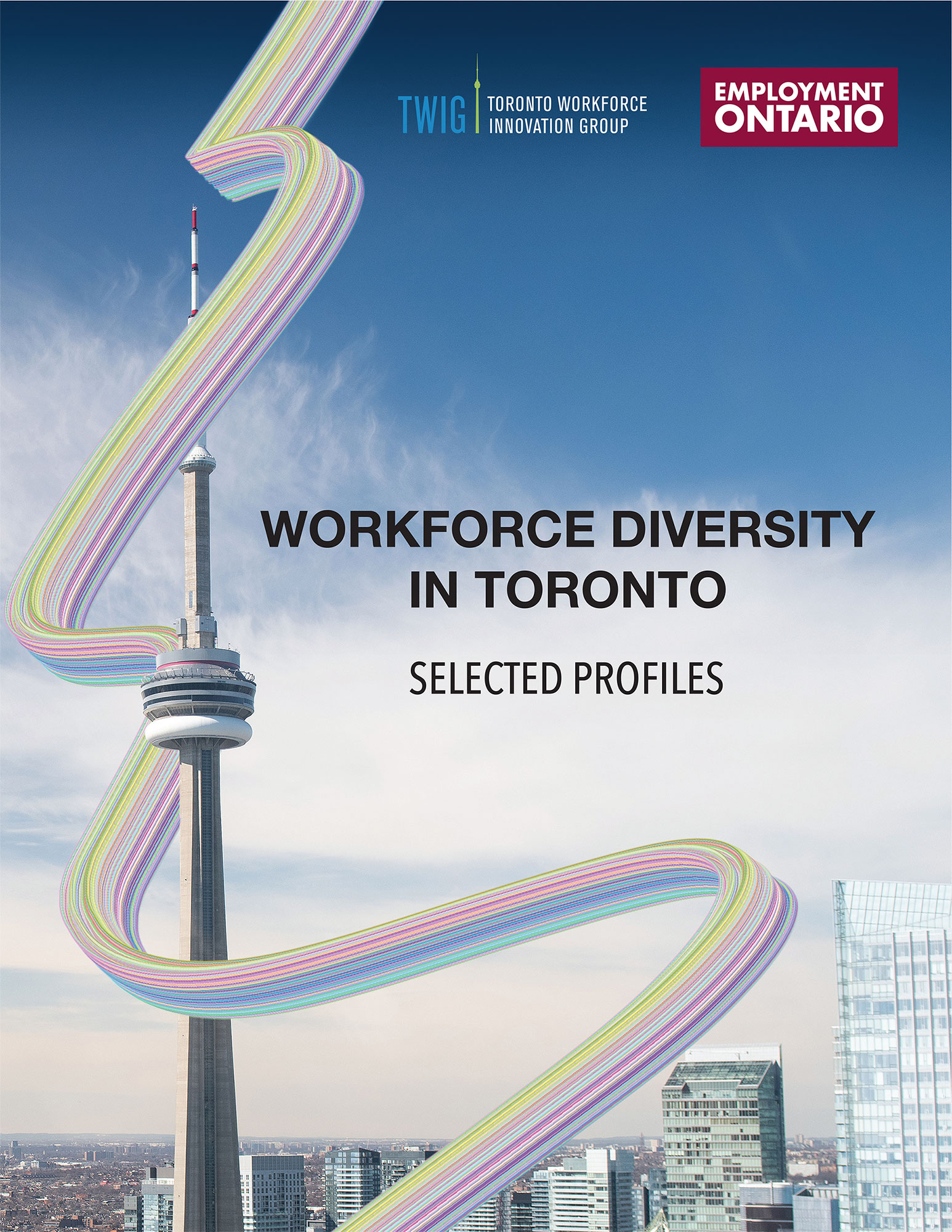Workforce Diversity Profiles
Older Job Seekers


The aging of Canada’s workforce is well documented. While one of the youngest regions in the country, Toronto has not been immune from the impacts of a graying workforce with residents aged 55 and over increasing by almost 10% from 2016 to 2021. More older persons are also continuing to participate in the labour force (either employed or looking for work).
Older job seekers and workers remain in the workforce for a number of reasons, with a recent Stat Can report indicating that 43% were working by necessity and 57% working by choice. This inclusion profile looks at Toronto’s unemployed aged 55-64 and those actively looking for work aged 65 – 74.
Gender
Older job seekers are almost evenly split between women and men. However, their reasons for remaining in the workforce could be different.
Disability
Not surprisingly, the percentage of older job seekers reporting a disability is significantly higher than for the workforce as a whole. The incidence of disability increases with age. It is also worth noting that early life disabilities can worsen with age. Stats Can data shows the same share with disability among the entire population 65+, so older job seekers are looking for work despite any disability.
Education
Older job seekers show lower completion rates for higher education levels but higher completion rates for lower levels. More older male job seekers attain the highest education levels compared to the overall workforce. Other studies suggest older adults generally have lower literacy,numeracy, and digital skills.
Income
The annual income in 2020 for Toronto’s older job seekers is substantially lower than for younger demographics. In many cases, older job seekers may have a pension and/or have other financial assets (e.g. home ownership). A further exploration of those who need to work out of necessity and those who work out of choice could help to inform the design of services for older job seekers.
Newcomers
While newcomers constitute a considerable percentage of Toronto’s workforce, the same cannot be said for older job seeker newcomers. Is that reflective of Canada’s immigration policies, or are other factors at play?
Job by Industry
When looking at the last industry that older job seekers worked in, the percentage of older job seekers is much higher in both construction and arts and entertainment. Meanwhile, percentages are much lower in the health care and professional, scientific and technical services sector. Is this because of better pensions in these sectors?
Final Thoughts
Many individuals work past their mid-60s for various reasons. Some find it necessary to keep working because of inadequate retirement savings, mortgage payments, unforeseen expenses, or the responsibility to support children and other family members. There is also evidence that working later in life is associated with better well being and less social isolation. Unfortunately, there isn’t a lot of research or evidence about the most effective approaches towards supporting older job seekers to find good employment. Given Canada’s aging population, we believe that further research is warranted.